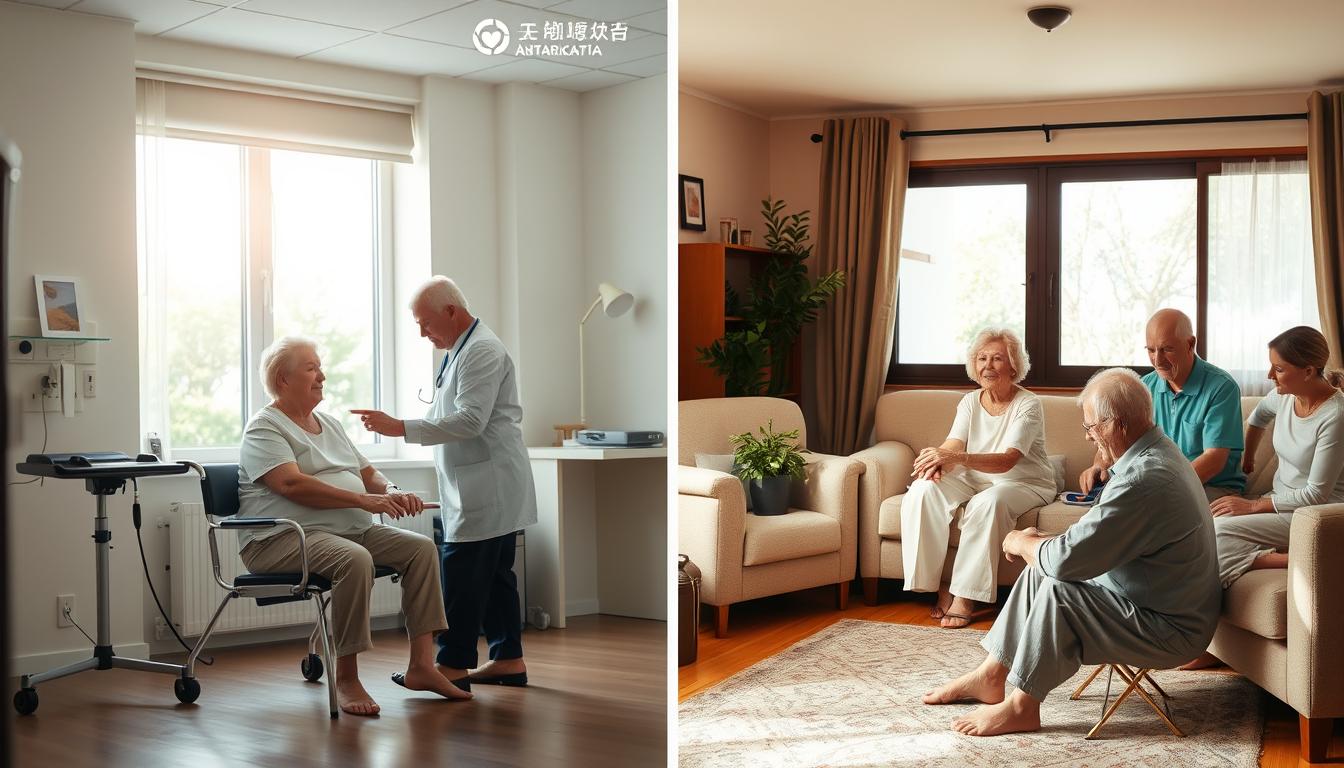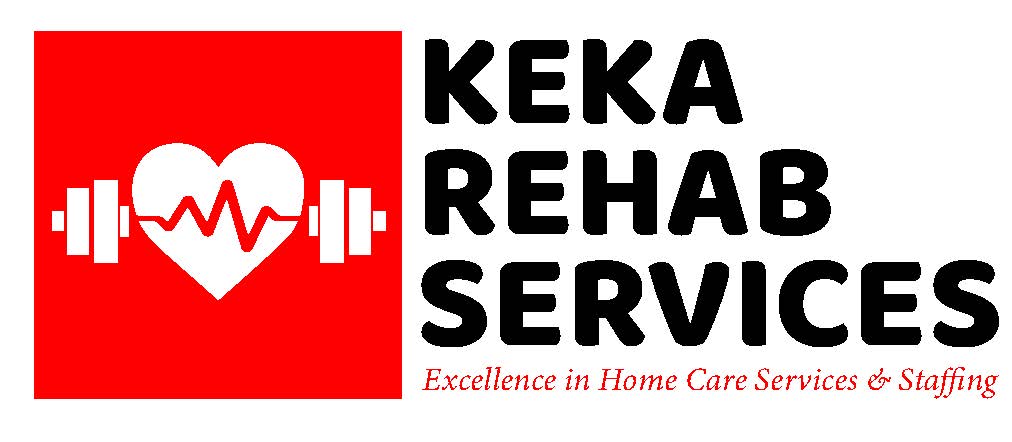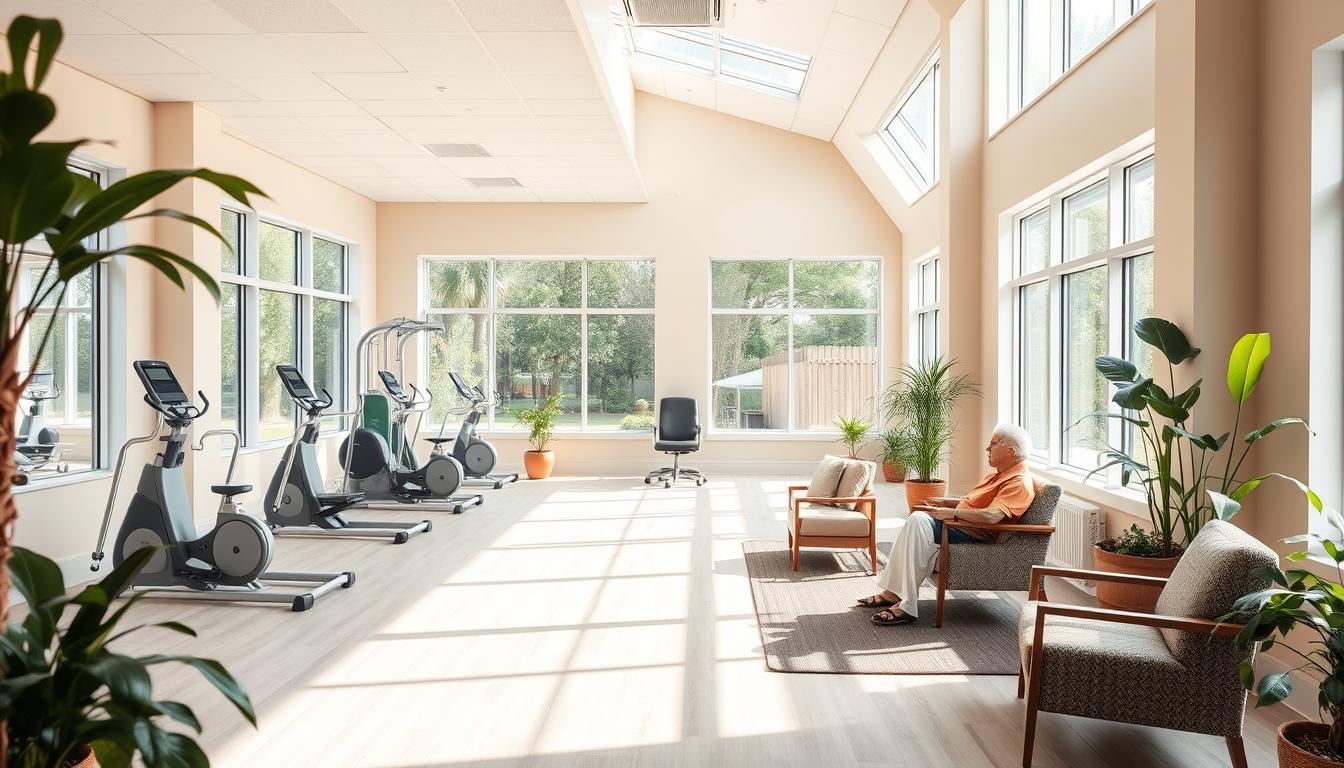Did you know that 83% of partner-assisted living facilities have visiting physical therapists for seniors? This shows how vital rehabilitation is in elderly care. We will explore how these programs change lives and help older adults stay independent.
Elderly rehabilitation programs help seniors improve after injuries, surgeries, or illnesses. They aim to lessen pain, improve function, and help seniors be independent again. These programs use special techniques, whether in facilities or at home, to tackle issues like muscle and joint problems, as well as brain disorders.
These programs are crucial. Most seniors go to rehab for muscle and joint issues or after joint replacements. With physical, occupational, and speech therapy options, seniors can get the help they need to feel strong and independent again.
Key Takeaways
- 83% of partner assisted living facilities offer visiting physical therapists
- Rehabilitation programs address common conditions like musculoskeletal problems and joint replacements
- Comprehensive care includes physical, occupational, and speech therapy
- Programs aim to reduce pain, improve function, and restore independence
- Rehabilitation can occur in specialized facilities or through home-based services
Understanding Senior Rehabilitation Services
Senior rehabilitation helps older adults get better after being sick or hurt. It makes them stronger and more balanced. This is done through different kinds of therapy.
What is Senior Rehabilitation?
Senior rehabilitation offers many services for older adults, including physical, occupational, and speech therapy. These are tailored to each person’s needs and goals.
These services help people get better after being in the hospital. They also offer support for living at home.
Types of Rehabilitation Care
Rehabilitation centres have many care options:
- Physical therapy to improve mobility and strength
- Occupational therapy for daily living activities like dressing or meal preparation
- Speech therapy to enhance communication, swallowing and address cognitive issues
- Psychological support services for emotional well-being
The Importance of Post-Hospital Recovery
It is very important for seniors to get better after the hospital. Medicare helps pay for rehabilitation care if the patient goes to a rehab facility within 30 days of leaving the hospital.
How long someone stays depends on their needs. Costs can be from $8,000 to $9,000 a month in a skilled nursing rehab facility.
Elderly Rehabilitation Programs: Components and Services
Elderly rehabilitation centres help seniors strengthen their muscles and improve their mobility. They also improve their thinking skills and help with talking problems. These programs are key, as many people worldwide could benefit from them.
Physical Therapy Services
Geriatric physical therapy makes seniors more mobile and balanced. Physical therapists create unique exercise plans for each senior. This helps prevent falls and boosts physical health.
Occupational Therapy Options
Occupational therapy keeps seniors independent in daily life. Therapists teach them how to use tools and techniques for everyday tasks. This is crucial for seniors to stay in their homes safely.
Speech and Language Therapy
Speech therapists help the elderly with talking, swallowing, and thinking issues. They work on making speech clearer and improving understanding, which is especially helpful for those who have had strokes or brain diseases.
Pain Management Solutions
Rehab centres focus on managing pain to improve seniors‘ lives. They use medicines and teach how to take them correctly. They also use non-medical methods like massage and heat therapy.
These services aim to improve seniors’ lives. The team includes many health experts. As more people age and get sick, these services will become even more critical.
Inpatient vs Outpatient Rehabilitation Options
You have two main choices for care after the hospital: inpatient and outpatient rehab. Your choice depends on your health and personal situation.

Inpatient rehab means you get care all day, every day, in a special place. You’ll get at least three hours of therapy each day. This can help you get better faster. It’s great if you’ve had a joint replacement, stroke, or need a lot of care.
Outpatient rehab allows you to go home after therapy. You’ll attend appointments one to five days a week, based on your needs. This is good if you have family support at home and can care for yourself.
How long you need rehab depends on your health. Inpatient care lasts from 30 days to 6 months. Outpatient care can last from 3 months to over a year for severe cases.
- Inpatient benefits: Faster recovery, less chance of problems, supervised exercise for conditions like COPD
- Outpatient benefits: More freedom, cheaper, easier to get back to daily life
Think about your insurance when choosing. If you need it, inpatient care is often covered. Talk to your doctor to determine the best care for you after the hospital.
Common Medical Conditions Requiring Senior Rehabilitation
Senior rehabilitation helps older adults with many health issues. It aims to improve their quality of life and help them move again after they have been sick or injured.
Post-Surgery Recovery
Seniors need special care after surgery to recover and move again. Rehab accelerates recovery and helps avoid problems. It includes exercises and ways to manage pain.
Stroke and Neurological Conditions
Rehab is beneficial for stroke survivors. It helps them talk better, move more quickly, and do daily tasks again. For diseases like Parkinson’s, rehab helps manage symptoms and keeps them independent.
Orthopedic Rehabilitation
Issues like joint replacements or broken bones require extensive rehab. Over 350 million people worldwide have arthritis, which is a common reason for rehab. Therapy increases strength and range of motion and teaches new ways to perform daily tasks.
Cardiac Recovery Programs
Rehab is key after a heart attack or surgery. It includes exercises, healthy eating, and stress management. This helps patients get more substantial and lowers their risk of heart problems.
Inpatient rehab centres offer lots of therapy, usually three hours a day, five days a week. Doctors who specialize in rehab visit often to help. They also work on preventing falls and managing dementia in these care plans.
Rehabilitation Settings and Environments
Rehabilitation for seniors can occur in many places. Each place is tailored to different needs and goals, and the place you choose is crucial for your recovery.
Skilled Nursing Facilities
Skilled nursing facilities give seniors with big needs a lot of care. They have three levels of care: Basic, Sub-Acute, and Acute. Each level is for what you need and how long you’ll stay.
Medicare helps pay for up to 100 days of care in these places.
Assisted Living Communities
Assisted living places often have therapy right there. Therapists come to help you, making it easy to get support. It’s great for those who need help but still want to be independent.
Home-Based Rehabilitation
Getting therapy at home is a good choice for many. It’s perfect if you like your home, have trouble getting around, or can’t travel well. It’s also good for staying in your own place while getting better.
Studies show it works well for people getting better from strokes, hip breaks, or COPD.
Choosing where to get therapy depends on what you need and want. In the Netherlands, 53,000 people got geriatric rehab in 2019. This shows more people need these services. No matter where, the goal is to help you do daily things better, be more social, and live better.
Cost and Payment Options for Senior Rehabilitation
Families need to know about the financial aspects of senior care. The cost can vary greatly depending on where you live, how long you stay, and how much care you need.
Medicare Coverage
Medicare helps a lot with the cost of care for seniors. It covers up to 80% of costs for outpatient care. For inpatient care, it covers up to 90% for 90 days.
This can make it easier for many seniors to get their needed care.
Private Insurance Options
Private insurance can also be beneficial. It can cover 60% to 90% of the costs. However, most insurance doesn’t cover long-term care.
Veterans Benefits
Veterans might get extra help from the government. This can include money for rehabilitation and living help. Check with the Department of Veterans Affairs to see if you qualify.
It is common to worry about long-term care costs. About 32% of older adults do. There are many ways to pay for them, such as savings or Medicaid for caregivers.
Getting advice from financial experts is very helpful. They can guide you on how to pay for care without losing your money.
Choosing the Right Rehabilitation Program
Choosing the right elderly rehab program is essential. You must think about your loved one’s health needs and what services they offer. It’s key to visit places and ask about their care.
Look at different rehab facilities. Inpatient Facilities offer 24-hour care with a doctor in charge. Patients receive therapy for three hours a day, five days a week.
Skilled Nursing Facilities offer less intense care. They are for those who need therapy but not hospital care. Long-term acute Care Hospitals help with very complex needs.
Home-based options are also good. Home and Out-Patient Programs give care at home or in a facility. They help with daily tasks and skilled nursing.
When checking places, ask about:
- How many patients with similar conditions do they treat
- If they have physical therapists
- How often and how long are therapy sessions are
- If your insurance covers it
- How they teach self-care at home
Location is important, too. You want a place your family can easily visit. Check the upkeep, food, and staff.
Lastly, consider accreditation. The Commission on the Accreditation of Rehabilitation Facilities (CARF) inspects rehab facilities to ensure they meet standards for geriatric care.
The Role of Family Support in Rehabilitation Success
Family support is key to helping seniors get better. Many caregivers are family or friends who may not feel ready for the job. Knowing how important family help is can really help seniors get better faster.
Caregiver Education
Training programs for caregivers are critical. They teach family members how to help their loved ones, including providing physical help, emotional support, and managing health issues. As more people live longer, there will be a greater need for skilled caregivers.
Family Involvement Strategies
Getting family involved in therapy and care plans helps seniors a lot. Caregivers who find joy in their role and have lots of support do better. Working together with healthcare teams and families can lead to better care and success in getting better.
Support System Development
A strong support system is vital for seniors’ long-term health. This means using resources for ageing in place and community services. Help from family, such as living arrangements and money, dramatically improves recovery chances. A supportive family environment helps seniors face rehabilitation challenges and stay healthy.
Conclusion
Elderly rehabilitation programs are key in senior care. They help seniors recover and stay independent. About 20% of U.S. seniors use these services every year.
These programs help with many issues, like muscle problems and preventing falls. They are essential.
Rehabilitation services include physical, occupational, and speech therapy. Most older adults seek these services because of joint or muscle problems. These services help them stay mobile and live well.
Fall prevention is also a big part of senior care. However, only 14% of seniors go for this reason, which shows that we need to talk more about it.
There are many ways to pay for these services. Medicare helps with the first 20 days in skilled nursing facilities. Private insurance, Medicaid, and VA benefits are also options.
The place of care depends on each senior’s needs. It could be a facility or home.
Choosing the right rehabilitation program is crucial. These programs help seniors regain function and stay independent, and they offer care that fits each senior’s needs.
Knowing what’s available can help you make good choices, ensuring that your loved ones get the best care.



